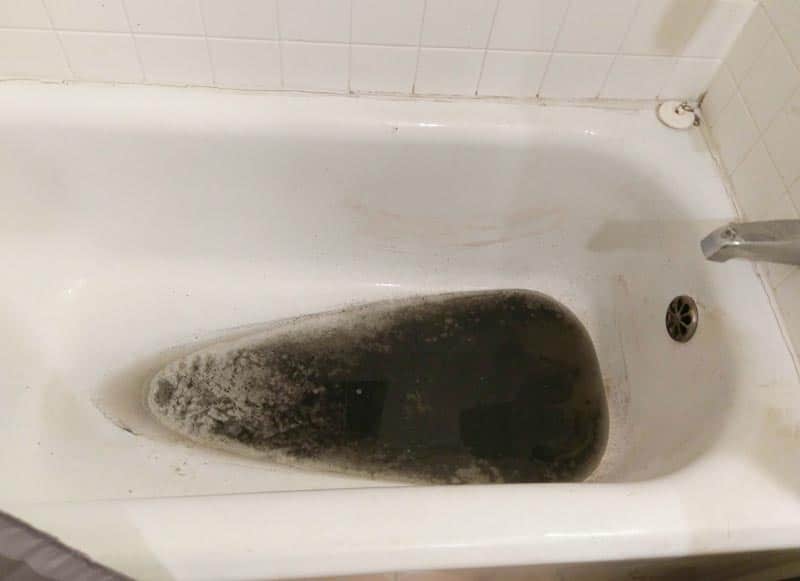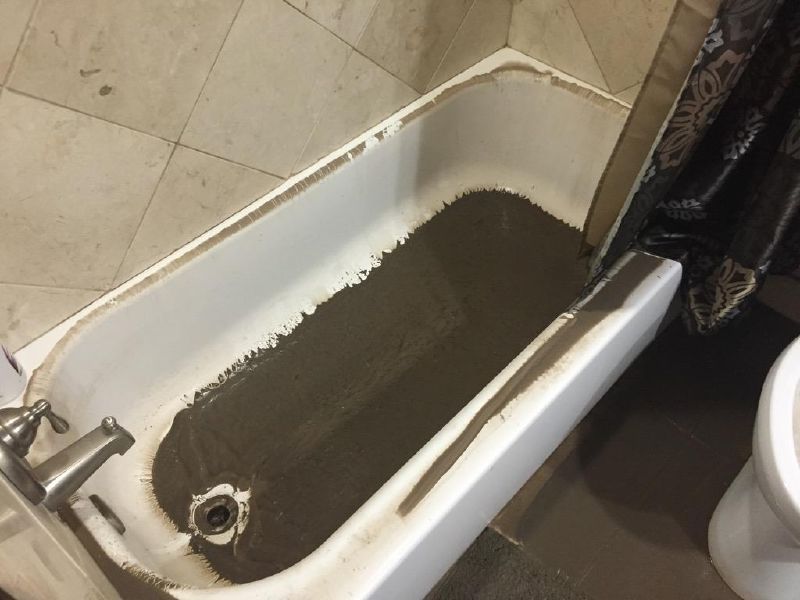An Guide to Waste Emergence in the Bathtub
An Guide to Waste Emergence in the Bathtub
Blog Article
What are your ideas with regards to Why sewage is coming up through your bathtub?

Sewage back-up in the tub can be a traumatic and unhygienic problem for any type of property owner. Not just is it bothersome, however it also positions severe health risks and shows underlying issues with the plumbing system. Recognizing why sewer is showing up through the tub is important for taking appropriate action to attend to the trouble efficiently.
Introduction to the Concern
Common Factors for Sewage Back-up
Obstructions in the Sewage System Line
Among one of the most typical sources of sewer back-up is a clog in the drain line. This can occur due to the accumulation of particles, grease, or international items in the pipes, protecting against appropriate circulation and triggering sewer to support right into your bathtub.
Tree Root Breach
Tree roots seeking dampness and nutrients can infiltrate sewer lines through little splits or joints. With time, these origins can grow and broaden, causing substantial damage to the pipelines and resulting in sewage back-up issues.
Understanding the Problem
When sewer starts backing up into the bath tub, it's a clear indicator of a problem with the drainage system. The wastewater that ought to be flowing far from your home is rather discovering its back into your living space, which can cause significant damage and health hazards.
Possible Causes
Several factors can contribute to sewer back-up in the tub. From obstructions in the drain line to issues with the plumbing framework, identifying the source is important for finding a remedy.
Aging Framework
Older homes may have dated plumbing systems that are much more at risk to corrosion, fractures, and deterioration. As pipelines age, they end up being much more vulnerable to leaks and obstructions, increasing the probability of sewage backup occurrences.
Heavy Rainfall or Flooding
During durations of heavy rainfall or flooding, the sewer system might come to be overloaded with excess water, triggering backups and overflows. This can cause sewer backing up into tubs and other components inside the home.
Signs of Sewage Backup
Foul Odors
Undesirable odors originating from drains pipes or fixtures, specifically in the restroom, may suggest sewer back-up problems. These odors are typically solid and consistent, signaling an issue that requires prompt attention.
Slow Draining Fixtures
Tubs, sinks, and bathrooms that drain gradually or otherwise in all could be experiencing sewage back-up. If several fixtures are affected concurrently, it's most likely that the problem originates from a typical factor, such as the main drain line.
Gurgling Noises
Unusual gurgling or bubbling sounds originating from drains when water is running in other places in the house are indicative of air trapped in the plumbing system. This air buildup can result from sewer back-up and should be investigated quickly.
Health And Wellness Risks Related To Sewer Backup
Contamination of Water Supply
Sewage back-up can contaminate the water in your house, presenting a serious health risk to you and your household. Exposure to contaminated water can result in stomach problems, skin infections, and other illnesses.
Mold and mildew Development
Dampness from sewage backup can create optimal conditions for mold growth in your home. Mold and mildew spores can worsen breathing troubles and trigger allergies in delicate people, making timely cleanup vital.
Spread of Condition
Sewer consists of harmful microorganisms, viruses, and parasites that can create a series of illness, including hepatitis, cholera, and gastroenteritis. Entering contact with sewer or polluted surfaces puts you in jeopardy of infection.
Tidying up After Sewage Backup
Sanitation Procedures
Extensively decontaminate and sterilize influenced areas after sewage backup to remove dangerous bacteria and avoid mold development. Use appropriate cleansing items and protective equipment to ensure risk-free and effective cleaning.
Remediation of Impacted Locations
Repair any kind of damages to floor covering, wall surfaces, or fixtures triggered by sewage back-up. Relying on the level of the damages, you might need to change carpeting, drywall, or other materials to recover your home to its pre-loss condition.
Immediate Actions to Take
Shutting Off Water
In case of sewage back-up, it's necessary to shut off the water system to stop further contamination and damage. Locate the major water shutoff valve in your home and shut it off till the problem can be dealt with.
Calling a Professional Plumber
Managing sewer backup is not a DIY work. Contact a certified plumber with experience in taking care of sewage-related issues to examine the situation and perform necessary repairs or clean-ups.
Preventing Contact with Polluted Water
Up until the sewage backup is solved, stay clear of contact with polluted water to avoid the spread of bacteria and microorganisms. Put on safety gear if you should be in the affected area and wash your hands thoroughly afterward.
Preventive Measures
Normal Maintenance of Sewer Lines
Schedule normal inspections and maintenance of your sewage system lines to recognize and deal with potential concerns before they intensify right into significant issues. This can consist of cleaning particles, checking for tree root invasion, and repairing any type of broken pipelines.
Setting Up Bayou Shutoffs
Think about setting up bayou valves in your plumbing system to prevent sewage from receding right into your home throughout durations of heavy rainfall or flooding. These valves immediately close when water starts backing up, safeguarding your home from contamination.
Appropriate Disposal of Household Waste
Stay clear of purging anything besides toilet tissue and human waste down the bathroom to avoid obstructions and clogs in the sewer line. Dispose of grease, oil, and various other house chemicals correctly to decrease the risk of plumbing issues.
Why is Sewage Coming Up Through Your Bathtub?
Reasons You May Have Sewage in Your Bathtub
All the drains in your home lead down different pipes to get to the main sewer line. If you’re seeing sewage in the bathtub, the problem is that the main sewer line is clogged up, which is causing the water running through other drains to be pushed back into other pipes. The problem isn’t the bathtub, but the main line. The sewer line can get backed up by anything that goes down the drain, from food waste, hair and soap particles to jewelry or children’s toys. Tree branches or dirt can also impact the sewer line. If you’re seeing sewage in the bathtub, you have a big problem that usually needs a professional plumber. Trying to fix this problem without the right tools or knowledge can lead to bigger plumbing problems.
Fixing a Clogged Sewage Line
Although you shouldn’t try to fix the clogged sewer line on your own, you may be able to mitigate the issue until you can get a plumber to your home. A plunger isn’t going to help, because it won’t be able to reach the sewage drain to unblock the problem.
Turn Off Water
Find the main shutoff valve to your home to turn off the water. This prevents more water from going down the drain which is only going to flow back into your bathtub.
Snake the Toilet and Drain
Start by using a drain pipe snake to clean out the toilet drain. Rotate the snake clockwise when you push the snake down. As you pull it out, the snake should spin counterclockwise. Follow up by snaking out the bathtub drain. If you are successful, both the toilet and shower will drain efficiently. If you’re not successful, you probably have a bigger problem than your tools and experience can manage.
Contact a Professional Plumber
Pros have the tools to find the source of the problem and the experience to manage big blockages without causing more damage to your pipes. It can save you a lot of stress by contacting the professionals sooner rather than later.
Identify the Early Signs of a Clogged Sewage Line
If you’re gearing up for a holiday family gathering or just want to avoid the hassle of a clogged sewage line in your home, make sure you recognize the signs of a clogged sewer line.
Slow drains are a sign of a sewer line problem. Gurgling drains from any drain in your home indicate that you may have an obstruction in the drains. If your toilet keeps getting clogged, it might be a problem with the sewer line. When you see laundry water or water from the dishwasher in different sinks in the home, it’s an indication that your sewer drain is beginning to get backed up. These symptoms can often be “fixed” temporarily to get through a day or week before you start seeing the same problem. When it comes to plumbing problems, you want to fix the root of the problem instead of muddling through. The clog will not go away on its own.
https://handymanconnection.com/mississauga/articles/why-is-sewage-coming-up-through-your-bathtub/

I'm very enthusiastic about What To Do If Sewage Starts Backing Up Into the Shower and I am assuming you liked our blog posting. Are you aware of someone else who is excited by the topic? Why not share it. I appreciate your readership.
Get A Free Quote
Report this page